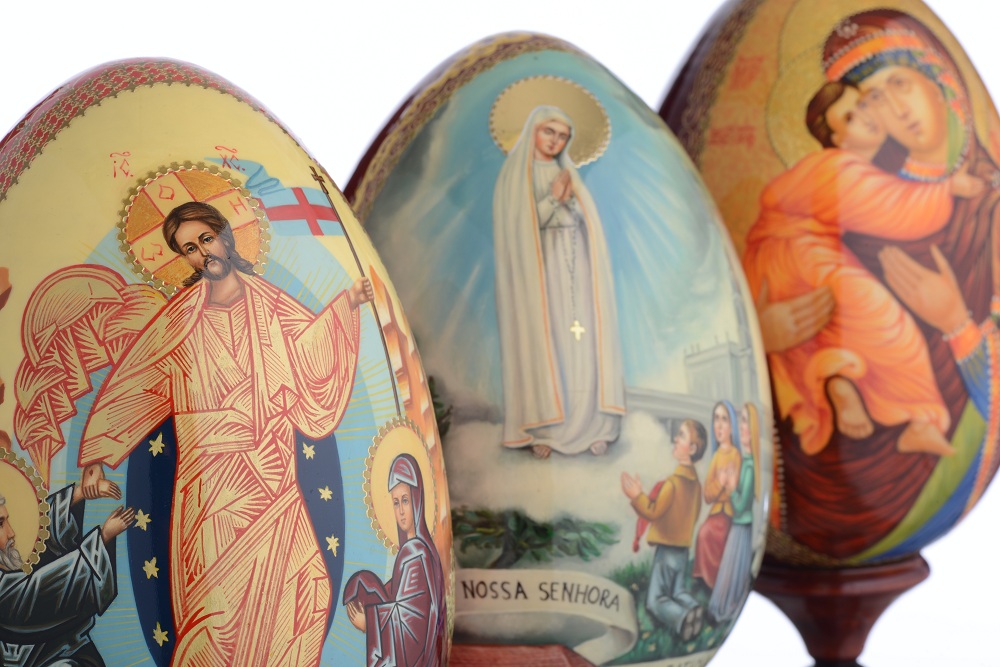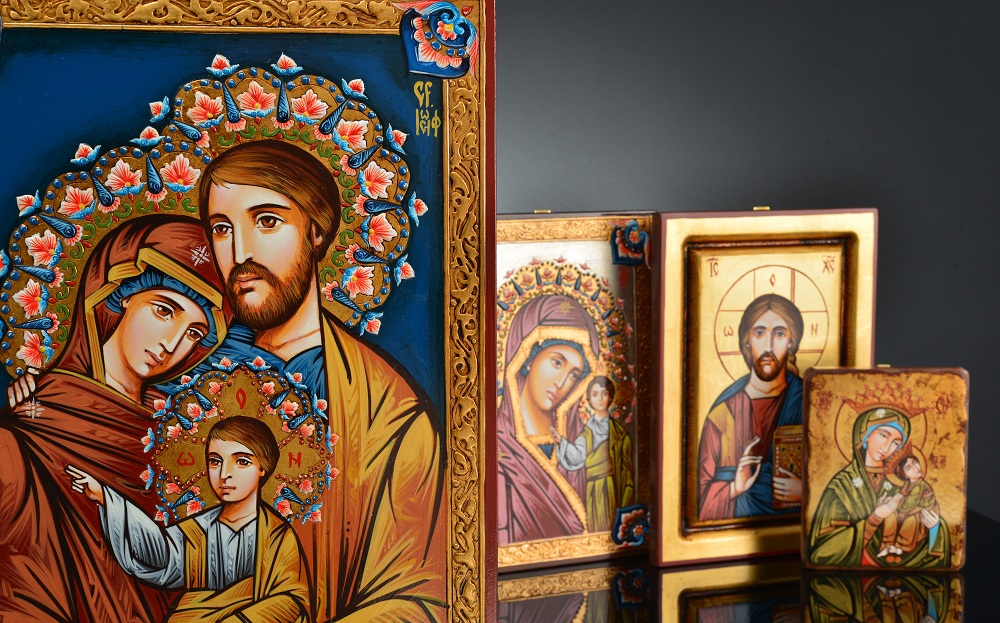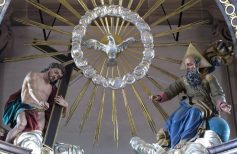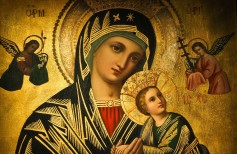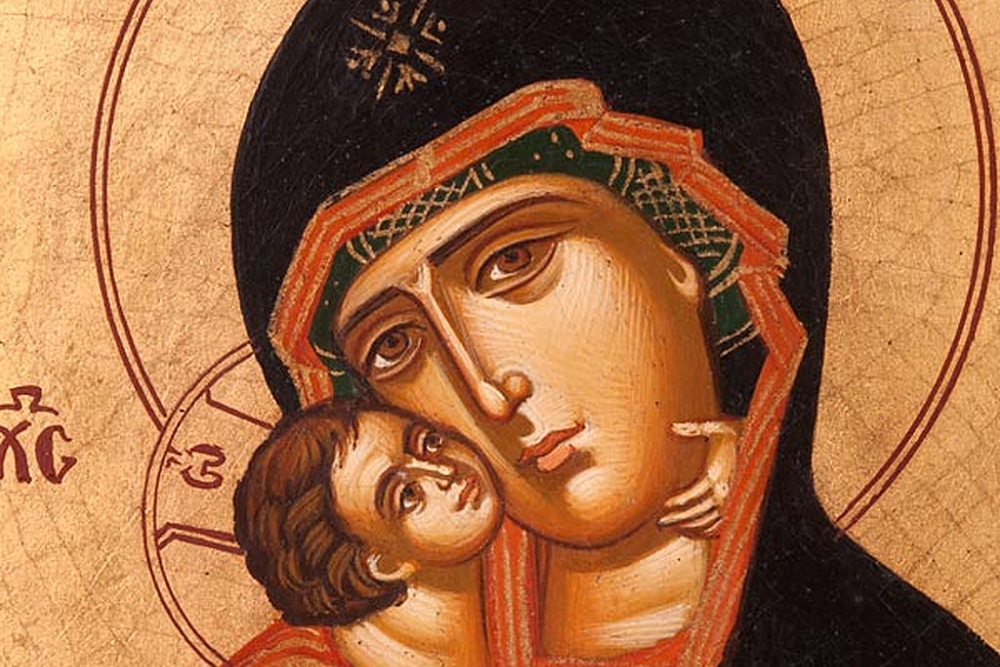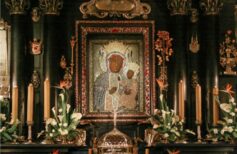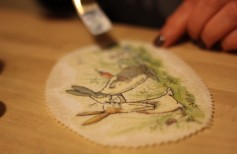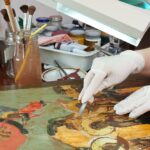The famous Russian icons are dazzling examples of ancient art, of a millenary tradition that draws its origins from the Byzantine splendours and embraces centuries of history and political and social upheavals, always remaining true to itself. Let’s get to know them better.
The charm of Russian icons is truly timeless. Over the centuries, starting from the very origins of the Russian Orthodox Church, just before the year 1000, they have become the emblem of a solemn and visceral religious expression, which draws inspiration from ancient, oriental suggestions, and which for a very long time remained uncontaminated by all those innovations and revolutions that have instead overwhelmed and distorted Western art from era to era.
As it is reasonable to imagine for a large country accustomed to very long times for changes, even the art of religious icons has long remained unchanged and immutable, and yet the symbolism that pervades Russian icons does not cease to fascinate and conquer, even today. Indeed, perhaps precisely the worrying loss of values and points of reference, the decline of taste, accelerated unbearably by the spasmodic speed with which everything changes, making the new already old in an instant, makes the recovery of a certain iconography even more necessary, which, by its very definition, is almost more a theological treatise than a mere artistic expression. Not for nothing in an exhaustive article, The Sacred Icons: The Complete Guide, we defined the creator of icons as more a writer than a painter. This is because each Russian icon tells a story made up of many intertwined stories, of evangelical references, of spiritual messages hidden in every detail, in every particular.
![]()
Sacred Icons: the ultimate guide
Sacred Icons. Only mentioning them evokes exotic and charming suggestions, a way to live religion that is far from the modern concept…
The peculiarity of Russian sacred icons arises precisely from the fact that they are an expression of deep and unique religiosity, but also the summary of the Russian national culture, of the spiritual ideals of these people of unshakable faith.
History of ancient Russian icons
The history of Russian icons began in the Middle Ages, towards the end of the 9th century, with the so-called Kievan Rus’, one of the first Eastern Slavic monarchies, which united numerous Slavic tribes in a single strong state under a single Christian prince. This state stretched across the territories currently occupied by eastern Ukraine, western Russia, Belarus, Poland, Lithuania, Latvia and Estonia. Kyiv was its capital, and the kingdom was called Rus’, or Land of Rus’, or even Kievan Rus’.
As we have already mentioned, the artistic, but also the theological basis of Orthodox Christian icons is Byzantine. From the art of the Byzantine Empire derive the canons to which all Russian Orthodox icons are attributable. In particular, the solemnity and drama of the art of Byzantium married beautifully with the desire to manifest the mystery and presence of Christ the Saviour. But that’s not all. The Virgin Mary has also been a recurring thematic subject in Russian iconography, since its origins.
The art of Russian icons flourished between the fourteenth and fifteenth centuries, just as the Byzantine Empire was facing its collapse. These are years of saints and sinners, of bloody invasions and burning faith. Between 1350 and 1450 Russian pictorial art reached its apogee and immediately afterwards began to break away from the Byzantine canons, moving towards a new style, increasingly linked to Russian culture, history and traditions. In particular, three historical, social and political factors can be identified that have profoundly influenced this evolution: the political-civil development of Orthodox and nationalist Russia, which claims its traditions as the engine of its own strength and development; the spiritual knot that arose around the monastery of the Holy Trinity and St. Sergius of Radonez, by the great Russian ascetics; the arrival in Russia of Theophanes the Greek, a very talented Byzantine artist who essentially influenced Russian art.
Another great artist, perhaps the most important for Russian art, was the monk Andrei Rublev, born around 1370, author of the famous Icon of the Trinity. Its flat, elongated and dimensionless icons will influence all the works of the 15th century, with their deep religious sense.
The five most important Russian icons
Five icons in particular are considered the most significant of Russian art. Unfortunately, only copies of two of them are preserved, but even these images are attributed even miraculous powers. Let’s take a look at them together.
Our Lady of Vladimir
Preserved today in the St. Nicholas Church near the State Tretyakov Gallery in Moscow, the icon is known as Our Lady of Vladimir and is one of the most significant examples of Russian art. Its iconography is Byzantine. In fact, it was a gift made by the Patriarch of Constantinople to the prince of Rus’ at the beginning of the 12th century. The icon depicts the Virgin Mary holding Baby Jesus in her arms, who leans tenderly to her cheek. The icon of Our Lady of Vladimir travelled extensively and often changed hands before finding its current location.
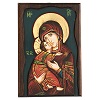
It is considered miraculous because on more than one occasion it was attributed the miracle of having defended Moscow from terrible invaders. The first time occurred in 1395 when Tamerlane decided at the last moment and inexplicably to save the city, and subsequently, the icon saved Moscow and its inhabitants two more times, during the invasions of the Mongols in 1451 and 1480.
Our Lady of Kazan
Unfortunately, only a copy of this splendid icon remains, kept in the Bogoroditsky Monastery in Kazan, from which the original was stolen in 1904. The icon had already been lost once, after a terrible fire, in the 15th century, but it was found miraculously, thanks to a little girl who told that the Madonna had appeared to her in a dream asking her to look for her image among the ashes and devastation.
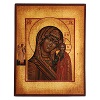
One of the most adored symbols by the Russians, she is considered the Holy Protector of Russia. In 1612, when the Poles had taken Moscow, it was carried by the reconquest troops as an emblem.
“The Trinity” by Andrei Rublev
We have already mentioned this work, currently housed in the State Tretyakov Gallery in Moscow. It was painted by the great Andrei Rublev, one of the most important Russian painters of all time. It does not represent the Virgin Mary, unlike the other icons listed here, but three angels seated at Abraham’s table, representing the Father, the Son and the Holy Spirit.
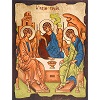
No miraculous event is attributed to this icon, which nevertheless remains one of the most beautiful ever painted in Russia. The harmony and spirituality it transmits are unmatched.
The Theotókos of Smolensk
Unfortunately, only a copy of the Theotókos remains preserved in the Cathedral of the Assumption of the city of Smolensk.
The name of the icon, Theotókos, comes from the Greek “Parent of God”, but we can translate it as “Mother of God” since it depicts the Virgin Mary with the Child.
Legend has it that the author of this work is none other than Saint Luke the Evangelist. The Byzantine emperor gave it to his future son-in-law, Prince Vsevolod of Kyiv in 1046, as a wedding gift and a symbol of the new alliance between the Orthodox Church and the newborn kingdom of Rus’.
Another legend states that it was this miraculous icon that protected Russia from Napoleon’s invasion and, in general, from all enemies that came from the West over the centuries.
Unfortunately, during the German invasion and the occupation of Smolensk between 1941 and 1943, the icon was irretrievably lost.
The Icon of Unexpected Joy
The icon of Unexpected Joy comes from a legend told by Saint Dimitrij of Rostov, where a young thief in love with the image of the Madonna depicted in an icon, who was saved by the latter, who appeared inviting him to change his life.
The icon represents the boy who dialogues with the image of the Madonna and therefore is an Icon in the Icon.
It expresses all the devotion of the Russian people to Mary, the merciful mother, who collects the fears, the tears of men, who consoles the tears and is always ready to act as a solicitous between men and God.


